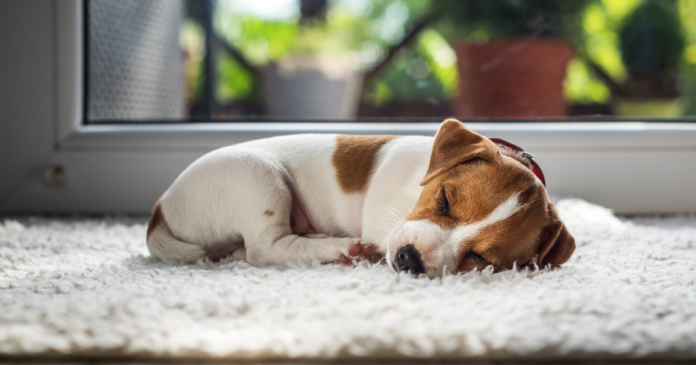In a world where conscious consumerism is on the rise, the choices we make in fabric selection for animal products play a pivotal role in the overall well-being of animals. The connection between “Better Animals Plus Fabric” goes beyond aesthetics; it’s about making ethical and sustainable choices for the creatures we share our planet with.
Understanding Animal Welfare
The comfort and health of animals are intricately tied to the fabric used in their products. When we prioritize their well-being, we pave the way for a healthier and more sustainable future.
Benefits of Quality Fabric for Animal Products
Choosing high-quality fabric for animal products comes with a myriad of benefits. Not only does it enhance durability, ensuring the products last longer, but it also contributes to improved hygiene and cleanliness. The longevity of products means less waste, aligning with environmental sustainability.
Choosing the Right Fabric for Different Animals
Different species have varying needs when it comes to fabric choices. Understanding these nuances is crucial for creating products that prioritize the welfare of each animal. For instance, softer fabrics might be suitable for pets like cats and dogs, while more rugged options may be preferable for larger animals like horses or livestock.
Environmental Impact of Fabric Choices
As the world grapples with environmental concerns, the fabric choices we make for animal products can either contribute to the problem or be part of the solution. Exploring eco-friendly options and reducing our carbon footprint is paramount. Fabrics made from sustainable materials or those that can be recycled contribute to a circular economy, minimizing environmental impact.
Innovations in Animal Fabric Technology
The landscape of fabric technology is evolving rapidly, and animals can benefit from advanced materials designed for their comfort and well-being. Technological breakthroughs are reshaping the way we think about animal products. From moisture-wicking materials for pet bedding to antibacterial fabrics for animal clothing, innovations are ensuring that animals not only feel comfortable but also stay healthy.
Fabric Trends in the Animal Industry
From traditional choices to cutting-edge materials, the animal industry witnesses various fabric trends. Understanding these trends helps manufacturers stay ahead and meet consumer demands. Recent trends include the use of organic cotton in pet accessories, bamboo-based fabrics for bedding, and recycled materials in the production of toys. Staying attuned to these trends ensures that the industry remains both fashionable and ethical.
Consumer Awareness and Ethical Choices
Consumers have the power to drive change in the industry. Their awareness and ethical considerations can push manufacturers to make responsible fabric choices, thereby creating a more humane market. With the rise of social media and increased transparency in manufacturing processes, consumers are more informed than ever. Brands that prioritize ethical fabric choices not only meet consumer expectations but also contribute to a positive brand image.
Challenges in Implementing Better Fabrics
While the benefits are clear, there are challenges in implementing better fabrics, ranging from cost considerations for manufacturers to resistance to change in the industry. Overcoming these hurdles is essential for progress. However, as demand for ethical products grows, manufacturers are finding innovative ways to make sustainable fabrics more cost-effective. Collaborations between industry leaders and research institutions are tackling the technological challenges associated with these fabrics.
Success Stories in Implementing Better Fabrics
Numerous companies are already leading the way by making ethical fabric choices. These success stories highlight not only the positive impact on animal welfare but also the favorable response from consumers. Companies that prioritize transparency in their supply chain and invest in sustainable practices are setting new standards for the industry. Consumer loyalty and positive reviews are often the rewards for these ethical choices.
The Role of Fashion in Animal Products
Fashion trends heavily influence fabric choices for animal products. Striking a balance between style and functionality is crucial to meet consumer expectations. As pet ownership becomes increasingly integrated into our lifestyles, the demand for fashionable and functional pet products is on the rise. From designer pet clothing to aesthetically pleasing bedding options, the intersection of fashion and animal products is creating a market that caters to both style-conscious consumers and their beloved pets.
Educational Initiatives for Fabric Selection
Creating awareness among both manufacturers and consumers is key to driving change. Educational initiatives and resources can guide individuals in making informed and ethical fabric choices. Manufacturers can benefit from training programs that highlight the advantages of better fabrics, both in terms of animal welfare and market competitiveness. Likewise, consumers can access educational materials to understand the impact of their choices, fostering a sense of responsibility in their purchasing decisions.
Government Regulations and Fabric Standards
Existing regulations set a baseline for fabric standards, but advocacy for stricter measures is necessary. Aligning industry practices with stringent standards ensures the ethical treatment of animals. Government bodies play a crucial role in overseeing and enforcing these standards. As public awareness grows, there is an increasing call for more comprehensive regulations that address not only the welfare of animals but also the environmental impact of fabric production.
Future Outlook: Sustainable Animal Products
Looking ahead, the future of animal product manufacturing lies in sustainability. Predictions suggest a shift towards more ethical practices and innovations in fabric choices to meet the demands of conscious consumers. The integration of technology, such as blockchain, may also play a role in ensuring the traceability and authenticity of ethically sourced fabrics. As the industry evolves, collaborations between stakeholders, including manufacturers, consumers, and regulatory bodies, will be crucial for creating a more sustainable and ethical landscape.
Conclusion
In conclusion, “Better Animals Plus Fabric” is not just a phrase; it’s a commitment to ethical and sustainable choices in the realm of animal product manufacturing. By understanding the impact of fabric choices, advocating for change, and embracing innovation, we can create a future where animals and humans coexist harmoniously. Each fabric choice becomes a statement, echoing the importance of compassion, responsibility, and a shared commitment to a better world for all living beings.
Frequently Asked Questions (FAQs)
- Q: How do fabric choices impact animal welfare?
- A: Fabric choices directly influence the comfort and health of animals, affecting their overall well-being. Ethical fabric choices contribute to a healthier and more humane environment for animals.
- Q: Are there affordable options for better fabrics in animal products?
- A: Yes, advancements in technology and increased demand have led to more affordable ethical fabric choices. Manufacturers are finding ways to make sustainable fabrics economically viable, ensuring accessibility for a broader consumer base.
- Q: What role do consumers play in driving fabric choices for animal products?
- A: Consumers have the power to influence manufacturers by making informed and ethical choices, driving the industry towards more responsible practices. Their demand for ethically sourced and sustainable products sets the tone for the market.
- Q: How can manufacturers overcome resistance to implementing better fabrics?
- A: Manufacturers can gradually introduce better fabrics, highlighting the long-term benefits and positive consumer response to encourage industry-wide adoption. Collaborations with research institutions and industry leaders can address challenges and pave the way for a smoother transition.
- Q: What are the key considerations when choosing fabric for different animal species?
- A: Fabric choices should consider the specific needs and behaviors of each animal species to ensure their well-being and comfort. Factors such as softness, durability, and breathability are crucial in tailoring fabric choices to the unique requirements of different animals.
Raed Also: Metflixhub




